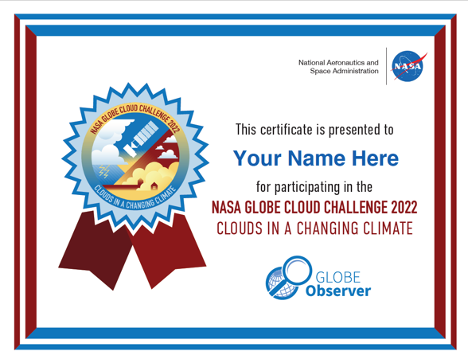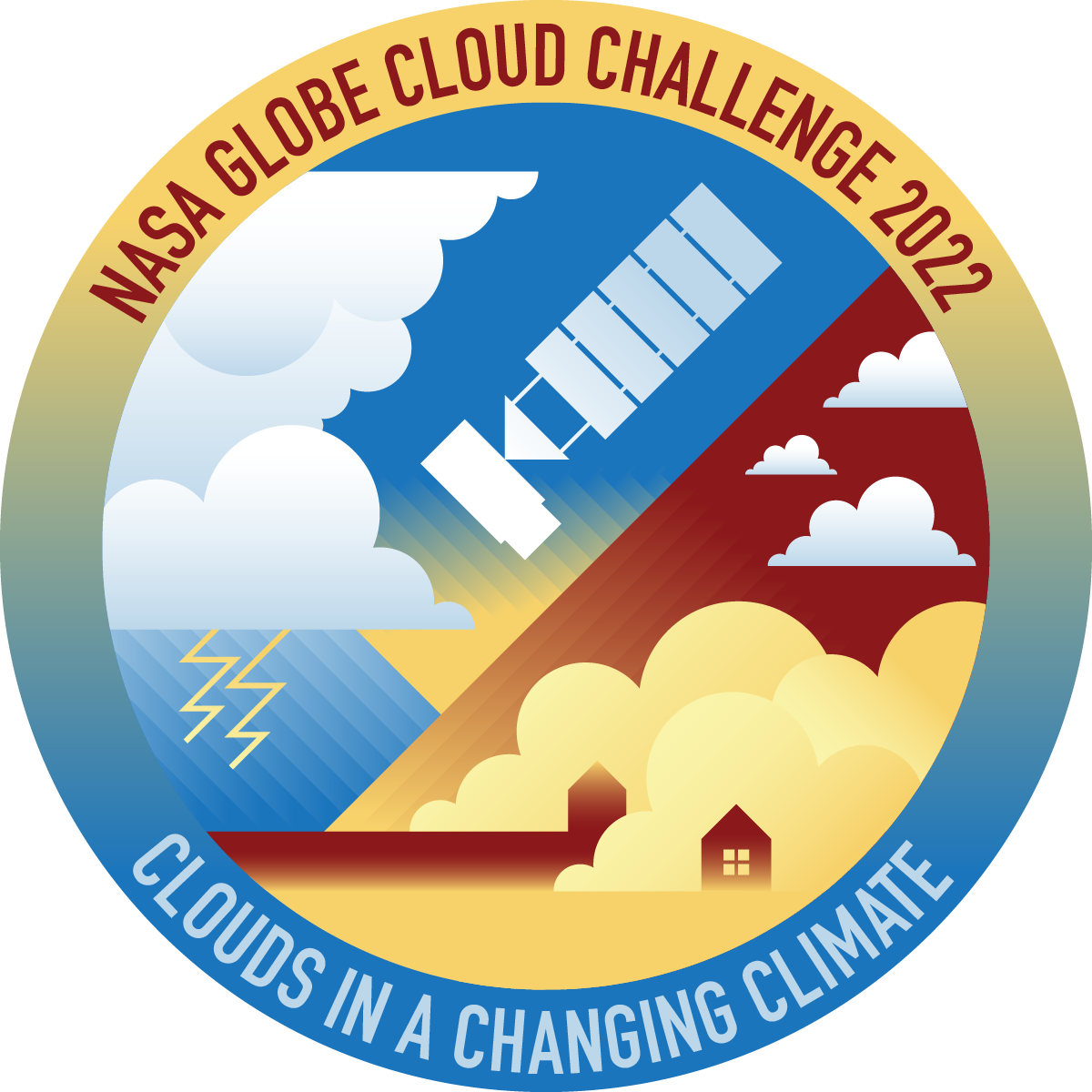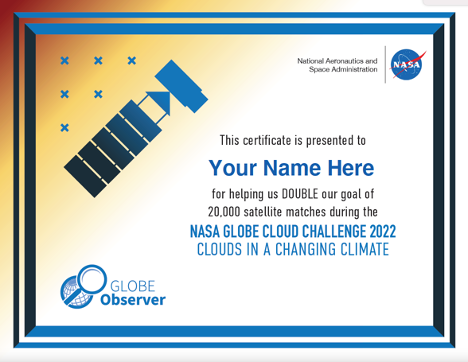News - National Wildlife Federation - EcoSchools U.S.
NASA GLOBE Cloud Challenge Exceeds Expectations: Badge and Certificates Now Available
A GLOBE Cloud Challenge: Clouds in a Changing Climate concluded on 15 February and the final results are now available.
“We are truly thankful to every single person that submitted cloud observations from their unique view,” said Marilé Colón Robles. Colón Robles is an atmospheric scientist based at NASA Langley Research Center (NASA LaRC) and SSAI. She is the project scientist for GLOBE Clouds.
Those observations tallied in at over 42 thousand with 108,214 photos being added to the GLOBE database. Not only did observations come in from 89 countries from all around the world, but all seven continents are represented in the data.
The GLOBE Clouds team had also hoped that challenge participants could help them by collectively making, at minimum, 20 thousand observations matched to satellite data. (The team always tries to match citizen science observations to different satellites, including Aqua, CALIPSO and Terra. Cloud Challenge participants really delivered on this goal and provided nearly 50 thousand satellite matches.
“These unique and detailed observations from around the world taken at about the same time give scientists a unique glimpse of our changing climate from the ground up. By more than doubling our matches to satellite data we now can merge these unique views of our Earth to the top-down view satellites offer, added Colón Robles.
In addition to cloud observations submitted via the GLOBE Observer app, this challenge also incorporated NASA GLOBE CLOUD GAZE as an additional way to participate. (CLOUD GAZE is a program, which began in summer 2021, and allows citizen scientists to look at cloud photographs submitted to GLOBE and tag elements such as the presence or absence of clouds, dust storms, smoke plumes and haze layers. In addition, participants can identify cloud types and point out any other noteworthy observations — all by visiting CLOUD GAZE on the Zooniverse online platform.) Citizen scientists using CLOUD GAZE to participate, collectively made over 300 thousand classifications during the course of the challenge. NASA GLOBE CLOUD GAZE is now one of the most active projects on Zooniverse (as of 24 February 2022).
"The Zooniverse has been excited to partner with the NASA GLOBE CLOUD GAZE team and are thrilled to see all the work volunteers contributed during the 2022 Cloud Challenge. We celebrate the efforts of the >7,000 registered volunteers who have contributed to the CLOUD GAZE project so far, including the more than 1,000 first-time Zooniverse volunteers who submitted their first classifications to the CLOUD GAZE project during the month-long challenge." -- Cliff Johnson, The Zooniverse.
Even though the challenge has concluded that does not mean that your observations and classifications are not still needed.
“We look forward to continuing to receive your contributions as citizen scientists by studying clouds with NASA, GLOBE and the Zooniverse. Keep observing and classifying! Your contributions can help scientist better understand clouds and a changing climate, concluded Colón Robles.
 |
 |
 |
Download a customizable certificate of participation (PDF) or digital badge (PNG) to celebrate. We also have a special satellite match certificate (PDF) if you contributed data to help us get to our satellite match goal. Print or share on social media, and thanks for joining in!
For all those that participated in the challenge, you can now download a Cloud Challenge badge and participation certificates. Please also visit the Zooniverse for the NASA GLOBE CLOUD GAZE participation certificate, by going here.
GLOBE Science Topics: Backyard Science Climate Climate Change Data Included General Science GLOBE Protocols Earth as a System Earth System Science Scientist Skills Primary Audience: Alumni Country Coordinators Partners Scientists Students Teachers Trainers Investigation Areas: Atmosphere Investigation Areas > Atmosphere:News origin: GLOBE Implementation Office





